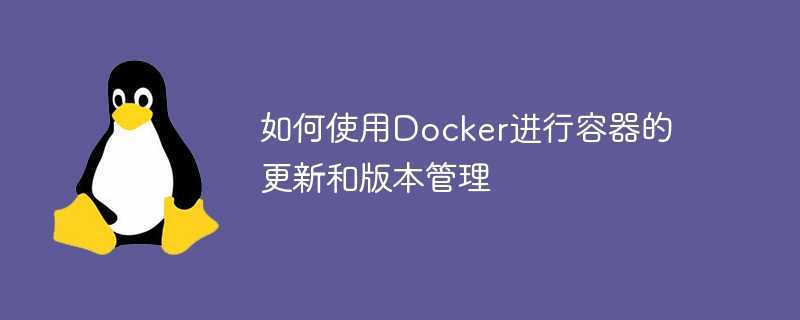

How to use Docker for container update and version management
With the continuous development of software development and deployment, containerization technology has become an important part of the modern development process part. As one of the most popular containerization platforms currently, Docker provides us with a convenient, flexible and scalable container management method. When using Docker for container updates and version management, we can use some techniques and tools to improve efficiency and reduce risks. This article will introduce how to use Docker for container update and version management, and provide specific code examples.
1. Container update
When using Docker to deploy an application, we first need to build a container based on the basic image. Once a new version of the image is released, we can pull the latest image through the following command:
docker pull [镜像名]:[版本号]
For example, to pull the latest Ubuntu 20.04 image, you can run the following command:
docker pull ubuntu:20.04
After pulling the latest image, we need to stop and delete the old container, and then create a new container based on the latest image. You can use the following commands to stop and delete containers:
docker stop [容器ID] docker rm [容器ID]
If you don’t remember the container ID, you can use the following commands to view running containers:
docker ps
After stopping and deleting the old container, we need to create a new container based on the latest image. You can use the following command to create and start a new container:
docker run [选项] [镜像名]:[版本号]
For example, to create a new container based on the latest Ubuntu 20.04 image and map the container's port to the host's port 8080, you can run the following command:
docker run -p 8080:80 ubuntu:20.04
2. Container version management
In containerized development, version management is a very important part. Through version management, we can track, control and roll back container changes.
Docker images can be versioned through tags. In order to use tags to version the image, we can add a custom tag to the image when building the image. For example, we can use the following command to build an image with the label "v1.0":
docker build -t [镜像名]:v1.0 .
Alternatively, we can also specify a label when pulling the image. For example, to pull an Ubuntu 20.04 image labeled "v1.0", you can run the following command:
docker pull ubuntu:20.04-v1.0
In addition to using Docker In addition to the built-in tags for version management, we can also use Git for more fine-grained version control. By using Git, we can submit the Dockerfile and related files to the Git repository every time we update or release a new version to implement version tracking and rollback.
For example, we can create a Git repository containing Dockerfile and application code, and use Git to manage the process of image building and version release.
When projects become large and complex, version management of containers using a single Docker command can become difficult. In this case, we can use container orchestration tools to help us update and version management of containers.
Common container orchestration tools include Docker Compose, Kubernetes, etc. They can help us define, manage and scale multiple containers, and provide convenient command line interfaces and APIs to perform version updates and rollback operations.
For example, using Docker Compose, we can define a YAML file containing multiple services and use the following command to start and manage the services:
docker-compose up -d # 启动服务 docker-compose down # 停止服务 docker-compose up --build # 重新构建并启动服务
Summary:
By using Docker With container updates and version management, we can obtain the latest images and code in a timely manner and maintain the reliability and stability of the application. When updating a container, we need to pull the latest image, stop and delete the old container, and create a new container. In terms of version management, we can use tags, Git, and container orchestration tools for version control and rollback operations.
Whether it is a small project or a large project, using Docker for container update and version management is a very important step. It can effectively improve the efficiency of development, testing and deployment, and maintain the stability of the application. and consistency.
Reference:
The above is the detailed content of How to use Docker for container updates and version management. For more information, please follow other related articles on the PHP Chinese website!
 The difference between k8s and docker
The difference between k8s and docker What are the methods for docker to enter the container?
What are the methods for docker to enter the container? What should I do if the docker container cannot access the external network?
What should I do if the docker container cannot access the external network? What is the use of docker image?
What is the use of docker image? How to open php file
How to open php file What does full-width and half-width mean?
What does full-width and half-width mean? How to open iso file
How to open iso file js method to get array length
js method to get array length



